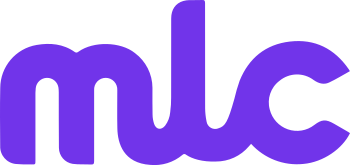The Crucial Role of Translation in Medical Device Labelling
As medical device companies expand globally, the need for precise and effective translations becomes critical to ensure safety, regulatory compliance, and market success. This exploration delves into the intricacies of medical device labelling translations, highlighting key considerations and best practices for achieving high-quality outcomes. Ensuring that health information is communicated in everyone’s native tongue is crucial, as it empowers individuals to make informed decisions about their well-being, fosters trust in healthcare systems, and promotes equitable access to essential services.
Understanding the Regulatory Landscape
Medical device manufacturers must navigate a complex web of regulatory requirements to bring their products to market. In the European Union, the Medical Device Directive (MDD) and the more recent Medical Device Regulation (MDR) mandate stringent standards for labelling and documentation. These regulations require that all information related to medical devices, including instructions for use (IFU) and labelling, be accurately translated into the official languages of the EU member states where the device is marketed.
The United States also has rigorous regulatory requirements enforced by the Food and Drug Administration (FDA). Medical device labelling must be clear, accurate, and comprehensible to ensure that users can safely and effectively operate the device. Compliance with these regulations is essential to avoid costly delays, penalties, or market rejection.
The Importance of Accurate Translations
Accurate translations are vital for several reasons:
- Patient Safety: Misinterpretations due to poorly translated labels can lead to incorrect usage of medical devices, potentially harming patients. Clear and precise translations ensure that healthcare professionals and patients understand how to use the device safely and effectively.
- Regulatory Compliance: Non-compliance with translation requirements can result in regulatory sanctions, product recalls, and loss of market access. High-quality translations help meet regulatory standards and facilitate smoother approvals.
- Market Acceptance: Professional translations that respect cultural and linguistic nuances enhance the credibility of the product in the target market. This can lead to better acceptance and trust among users.
Key Considerations in Medical Device Labelling Translations
1. Expertise in Medical Terminology
Medical translations require a deep understanding of medical terminology and regulatory language. Translators must be experts in the medical field to ensure that technical terms are accurately rendered. This expertise helps maintain the integrity of the information and ensures that the translations are precise and reliable.
2. Use of Translation Memory
Translation Memory (TM) technology stores previously translated segments of text. It ensures consistency across documents by reusing standard phrases and terms. For medical device companies, TM can significantly reduce translation time and costs while improving accuracy.
3. Quality Management Systems
Implementing a robust quality management system (QMS) is crucial for ensuring the accuracy and consistency of translations. A QMS includes processes for reviewing and validating translations, as well as mechanisms for addressing errors and continuous improvement. ISO 9001 certification, for instance, is a hallmark of a reliable translation company that adheres to high-quality standards.
Utilising Language Service Providers (LSPs) with recognised accreditations ensures the highest standards of quality, accuracy, and cultural sensitivity in communication, which is vital for maintaining trust and effectiveness across diverse audiences.
4. Native Speakers and Cultural Competence
Translations must be performed by native speakers of the target language to ensure that they are not only accurate but also culturally appropriate. Native translators understand the nuances of the language and can adapt the content to meet local expectations and regulatory requirements.
The Translation Process
The translation process for medical device labelling involves several stages:
- Project Planning: Defining the scope of the project, identifying the target markets, and selecting the appropriate languages.
- Translation: Translating the content by native-speaking medical experts.
- Review and Quality Assurance: Reviewing the translations for accuracy, consistency, and compliance with regulatory requirements.
- Finalisation and Delivery: Finalising the translations and delivering them in the required formats.
Case Study: My Language Connection
My Language Connection Ltd is a leading provider of medical device translation services. We emphasise the importance of accurate translations to meet regulatory requirements and enhance patient safety. MLC employs expert translators who specialise in medical terminology and are native speakers of the target languages. Our services include:
- Medical Device Localisation: Adapting translations to meet local regulatory and cultural requirements.
- Device Labelling: Ensuring that labels are clear, accurate, and compliant.
- Translation Memory: Using TM to maintain consistency and reduce costs.
- Quality Assurance: Implementing rigorous review processes to ensure high-quality outcomes.
For instance, their work with Dexcom, a company specialising in continuous glucose monitoring systems, involved translating marketing and user manual documentation for various territories. This project required high-level proofreading and the use of native language subject matter experts to ensure speed and accuracy, facilitating Dexcom’s market expansion across Europe, the Middle East, and Africa.
In the global medical device market, high-quality translations are essential for regulatory compliance, patient safety, and market success. Medical device companies must invest in professional translation services that offer expertise in medical terminology, utilise translation memory, implement robust quality management systems, and employ native-speaking translators. By doing so, they can ensure that their products are accurately and effectively communicated to users worldwide, thereby enhancing safety and achieving regulatory approval.
For more information on medical device translation services, visit My Language Connection Ltd.

